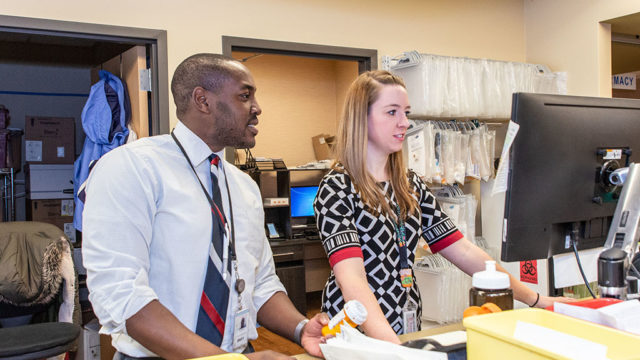
Badger pharmacists pioneer innovative services to aid underserved populations
By Katie Gerhards
Photos by Ingrid Laas
The first time Scott Larson (BS ’96) walked through Gundersen St. Joseph’s Hospital and Clinics in Hillsboro, Wis., he was a fresh graduate of the University of Wisconsin–Madison School of Pharmacy who had just applied for a residency program at UW Health.
“I was just getting my feet on the ground when this small hospital in western Wisconsin called about an opportunity to further develop their pharmacy program,” Larson remembers. They had heard about him through shared connections and reached out to set up a tour. “When I went to visit, I saw the tiny rural hospital and thought, ‘Oh my goodness, is this really the job for me?’”
But upon returning to Madison and talking to his mentors and colleagues about what he’d seen, he quickly changed his mind. One of his mentors asked, “Well, if you don’t want it, would you mind if I applied?”
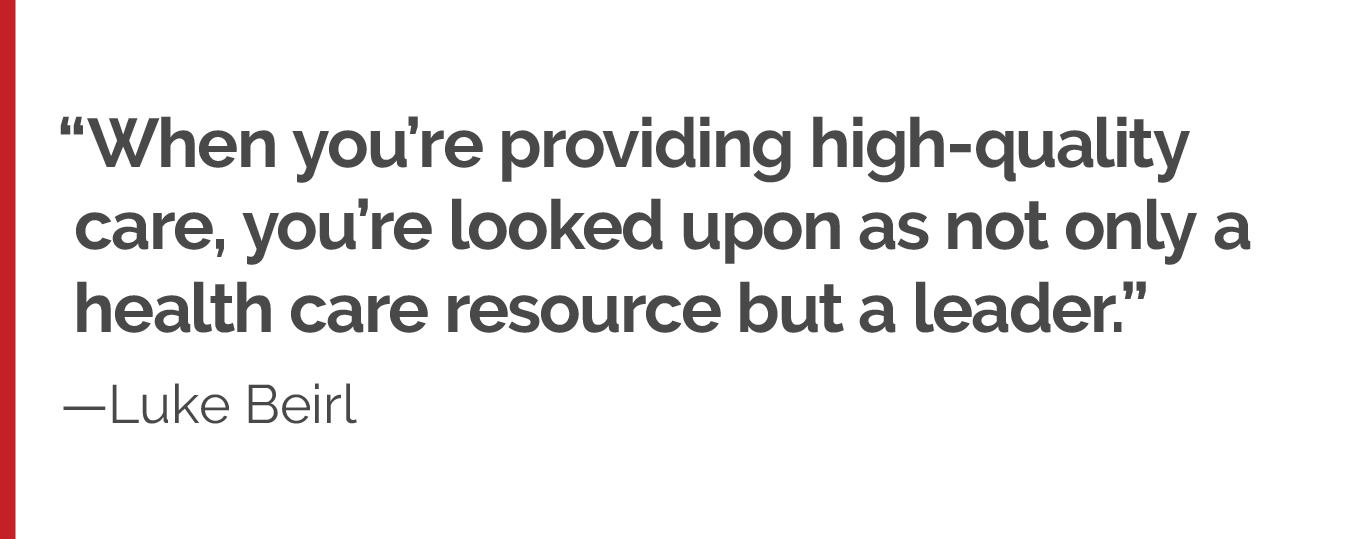
Today, Larson oversees the pharmacy and emergency department at Gundersen St. Joseph’s and is one of many Badger Pharmacy alumni who have developed innovative models and services — such as naloxone trainings, advanced data-driven population health initiatives, and antibiotic stewardship programs — to improve health care and overcome the challenges of rural settings.
Repositioning pharmacy
When agreeing to grow Gundersen St. Joseph’s pharmacy program, Larson made one mandatory request: The pharmacy had to be on the first floor, between the emergency room and the medical-surgical unit.
“If you go into a lot of hospitals, you’ll find the pharmacy in the basement, upstairs, or in some dark wing of the hospital instead of taking up the precious real estate that maybe radiology or the lab does, but I find that the pharmacy has to be part of the hospital’s central operations to be fully utilized,” says Larson, who also chairs the pharmacy portion of the Rural Wisconsin Health Cooperative, a network of rural health practitioners from nearly 60 hospitals who meet to discuss current issues and best practices.
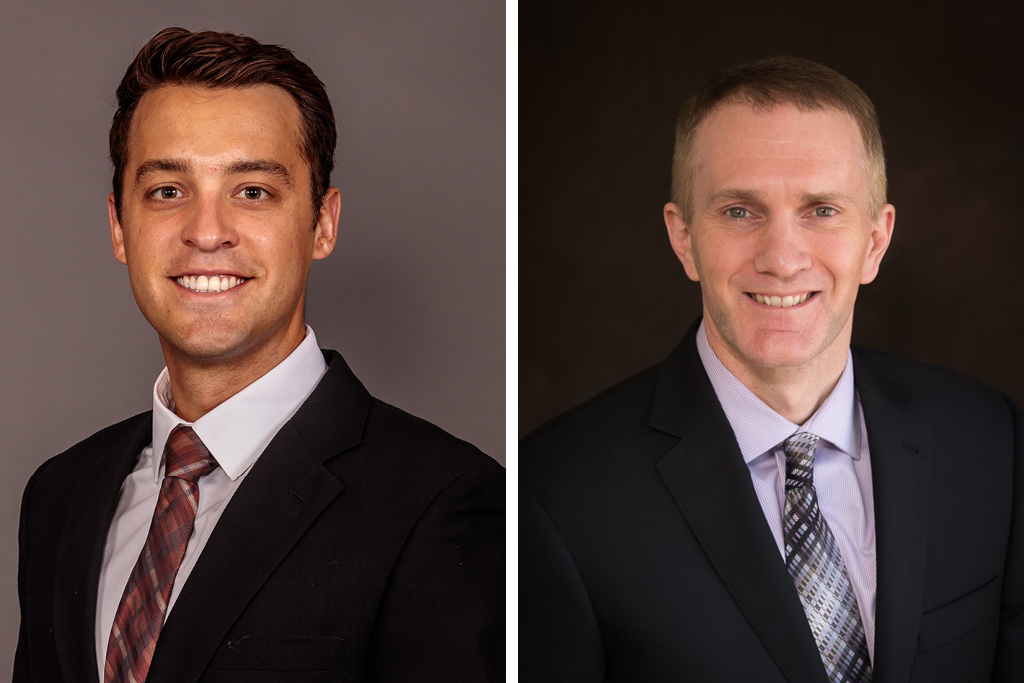
Even now, as Gundersen St. Joseph’s is building new facilities, the pharmacy is maintaining its prominent proximity, which makes pharmacists more available to answer physicians’ questions. Because of its central location, the pharmacy is also used to store some of the equipment used in the ER and other departments.
“Positioning the pharmacy department in a central area has definitely opened the scope of the pharmacy and helped me achieve my goal to have the pharmacy be the go-to place. It doesn’t matter what you need — come to the pharmacy and we’re going to help you find the answer,” he says.
His mission to position pharmacists as a go-to resource and the relationships it helped him develop with the surrounding teams of physicians, nurses, and providers made him a top candidate to also oversee the emergency department. “Our education from the UW–Madison School of Pharmacy definitely prepared me to do other things within the hospital beyond pharmacy, and that includes directing our emergency room,” says Larson.
Even as a pharmacy and emergency room director, Larson continues to work with patients at the clinical pharmacy level and serves as a preceptor to the School’s PharmD students as they complete their Introductory Pharmacy Practice Experiences (IPPE) and fourth-year Advanced Pharmacy Practice Experience (APPE) rotations, including the recently developed rural-focused APPE.
“I reinforce to the PharmD students the role they have on the care team,” says Larson. “Physicians are well-versed to treat pneumonia in an otherwise healthy patient, but if that patient is 82, has medication allergies, perhaps has an extensive medication list, liver problems, renal failure, and/or some resistant microorganisms — that physician will need us to step in and help.”
Innovating practice
The role pharmacists play on the health care team is expanding, most recently with Wisconsin pharmacists gaining the ability to administer non-vaccine medication injections. But in rural areas where access to physicians can be extremely limited, pharmacists have even more latitude to practice and create innovative services to improve patient care.
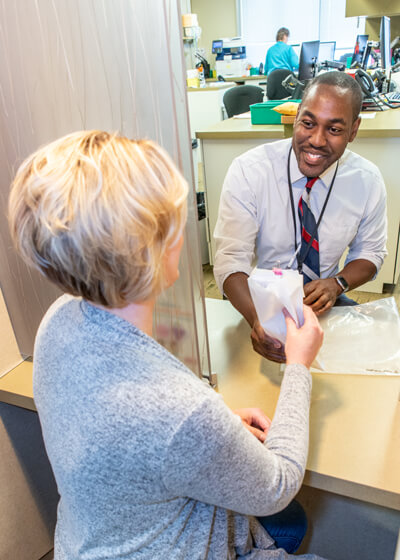
“Your ability to influence change and develop interesting models to deliver services is absolutely incredible in rural areas because there’s usually not a lot of red tape and there’s usually a high demand,” says Luke Beirl (PharmD ’11), who is now the CEO of the Hayward Area Memorial Hospital and Water’s Edge Senior Living Center.
Before climbing to CEO, Beirl practiced in a rural community pharmacy, and then took a clinical pharmacy role with Memorial Medical Center in Ashland, Wis., where he identified the need for a process improvement position to be shared with their sister hospital, Hayward Area Memorial Hospital. He proposed the position, which was received with tremendous support, and then worked in the role for two years, until he was tapped to serve as CEO. During his time in process improvement, he recommended and implemented various changes, including stabilizing Code Blue responses, which impacted many patients in very acute and high-stakes situations.
“I’m always a little bit shocked that people assume opportunities are limited in rural areas,” says Beirl. “My experience has been just the opposite of that, and I think it’s even more engaging to try to solve some of the issues in rural health care.”
One of the common issues rural patients face is a dearth of specialist care, which pharmacists can help alleviate. For example, the House of Wellness in Baraboo, Wis., has a psychiatrist visit once every two weeks, but even so, this can pose a problem for patients with acute psychiatric issues. “Patients could end up waiting to see the psychiatrist for up to a month,” says Clinical Pharmacy Director Hussain Harun (PharmD ’12). “Our pharmacy department has overcome that by setting up a collaborative practice agreement so that patients can start or renew some drug therapies while they’re waiting for the specialist visit.”
The House of Wellness is one of the Ho-Chunk Department of Health sites and primarily serves tribal members and Ho-Chunk employees. Abigail Moore (PharmD ’17), a pharmacist at the House of Wellness, is leading a naloxone education initiative about opioids, their effects, and how to utilize naloxone to respond to an opioid overdose. She travels around the Ho-Chunk Nation Service Delivery area and holds free hour-long naloxone trainings for tribal members, employees, and community members. Since the initiative started in November of 2017, she has trained more than 500 people to use the opioid overdose reversal drug to save lives.
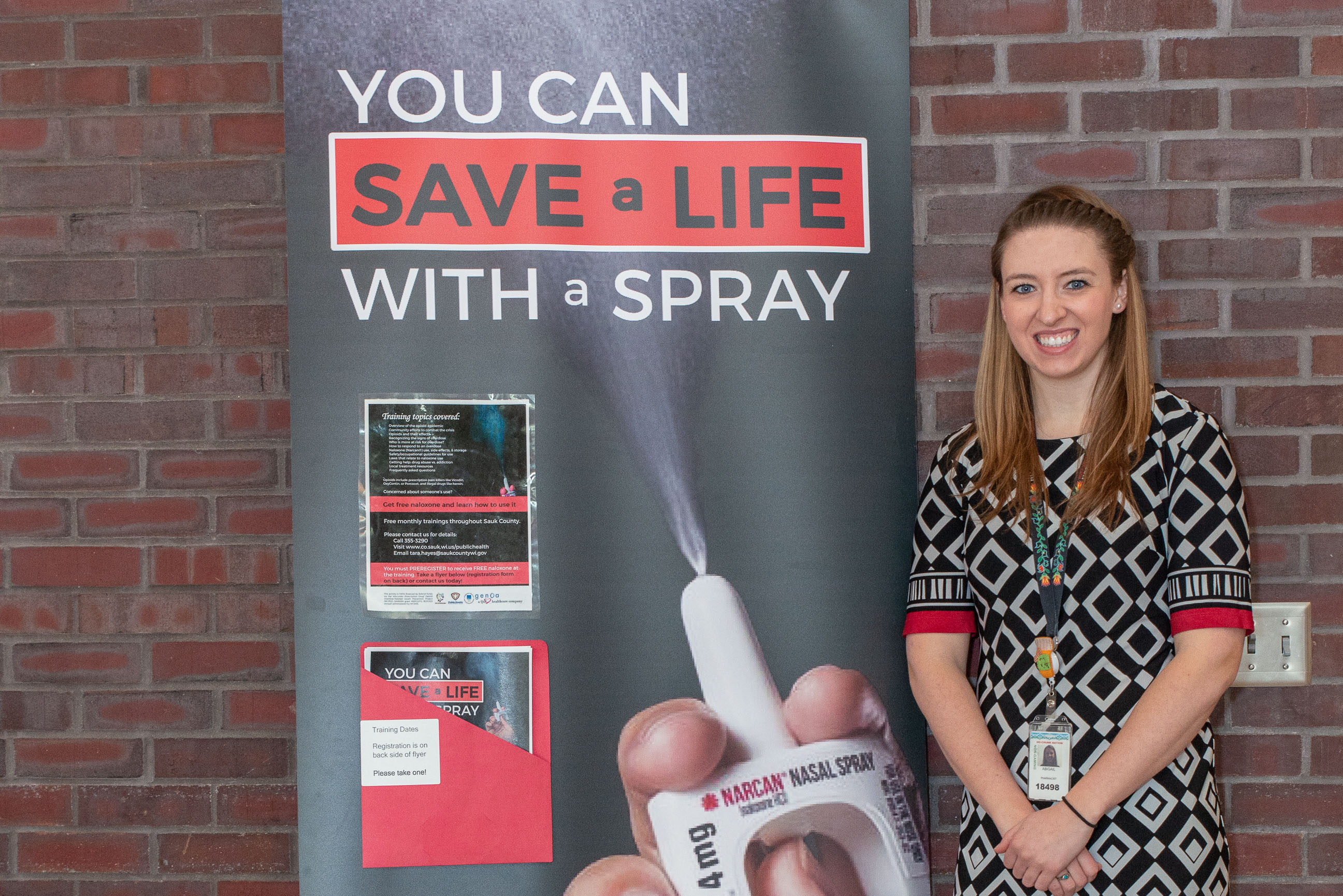
Wisconsin has a standing order for naloxone, which means any pharmacist working at a pharmacy participating in the state wide standing order can generate a prescription for the drug and dispense it under Jonathan Meiman, chief medical officer of the Wisconsin Department of Health Services. “After doing a lot of research, we opted to do a local standing order with the naloxone prescriptions authorized by our own medical director so we can create and track our own documentation,” says Moore.
Moore is also leading an interprofessional smoking cessation team in partnership with the Public Health Service Nicotine Cessation Services Access Workgroup. She and three colleagues use motivational interviewing and tracking tools to ensure patients have the support they need to successfully quit using commercial tobacco and nicotine products.
“Because of our rural setting, we have a lot more opportunity to expand upon our clinical skills and be utilized by our providers in the clinic to address the needs in our communities outside of the normal pharmacy workflow,” says Moore. “We’re able to go a little bit further with our level of patient care.”
Improving population health
As a third-year PharmD student at UW–Madison School of Pharmacy, Melanie Hanson (PharmD ’17) took an infectious disease course that sparked an interest in working with physicians to determine when to use — and when to avoid — antibiotics appropriately, without encouraging resistance.
When she started as a pharmacist at the Ho-Chunk Health Care Center in Black River Falls, Wis., she supplemented that knowledge and interest with a certification from the Society of Infectious Disease Pharmacists and created an antibiotic stewardship program to protect patient health by providing physicians with updated guideline-based recommendations for antibiotics.
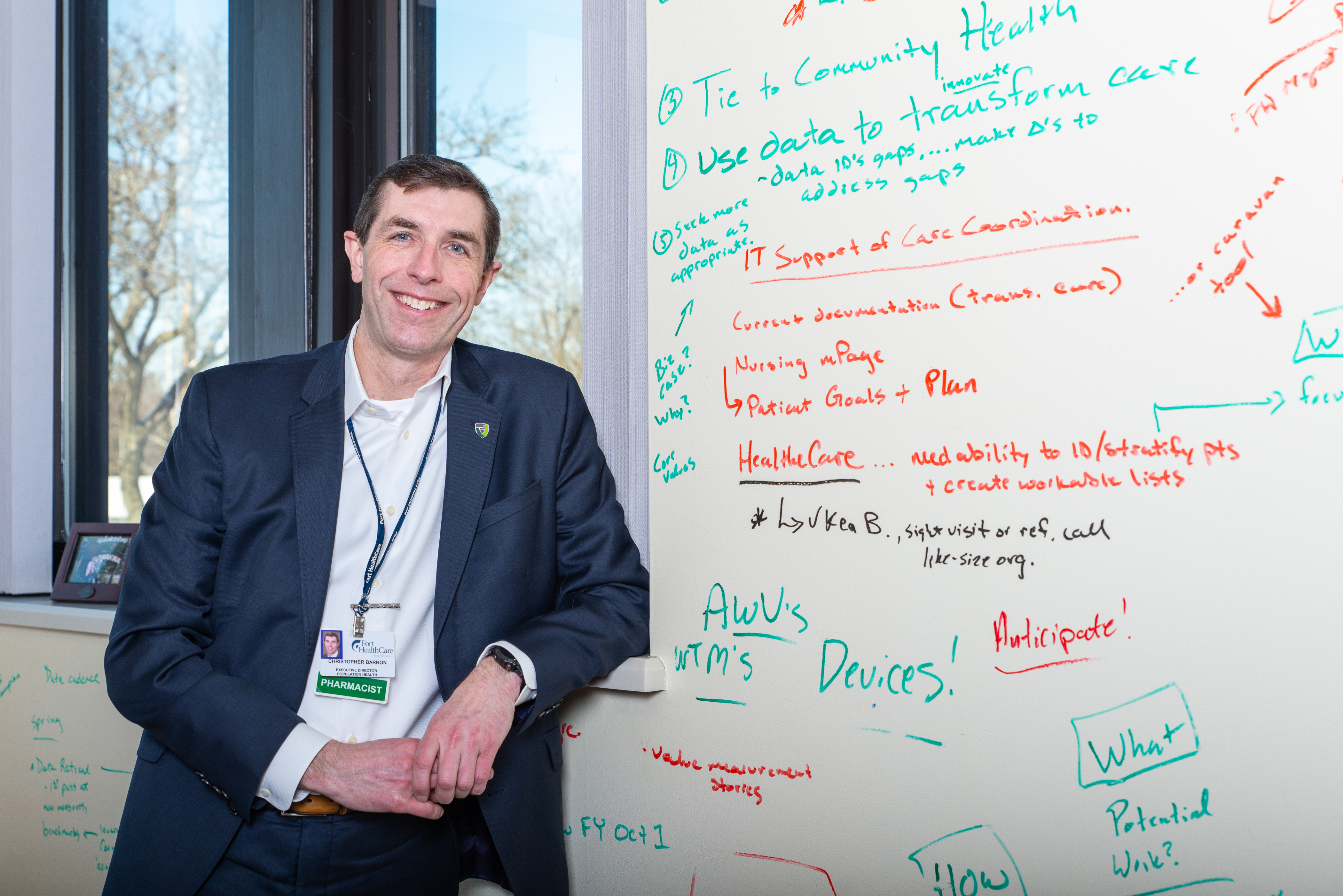
“I took the six most common infections in our area — bronchitis, ear infections, urinary tract infections, pharyngitis, community-acquired pneumonia, and sinusitis — and created a key ring with their primary treatments, secondary treatments, and etiologies so providers would have it as a quick reference,” says Hanson.
She also contacted about six local hospitals to put together an antibiogram to see the local sensitivities for antibiotics and to give context for when certain antibiotics haven’t been effective and should be avoided to discourage further resistance.
Like Hanson, Chris Barron (BS ’97) is leveraging data to protect the health of patients, but at an almost unparalleled level.
“When we started this program four years ago, we were one of a handful of facilities doing so nationwide,” says Barron, executive director of population health and clinical services at Fort Healthcare in Fort Atkinson, Wis. He is referring to their capability to identify patient populations in need of additional care.
“Our population health management tool looks inside our electronic health records at 13 disease state registries — such as patients with diabetes or atrial fibrillation — and 223 measures of performance to identify gaps in care for our patients so we can close those gaps,” says Barron.
Their sophisticated system can use algorithms to double-check that patients are receiving the right medication or treatment, currently focused on diabetes and cancer screenings.
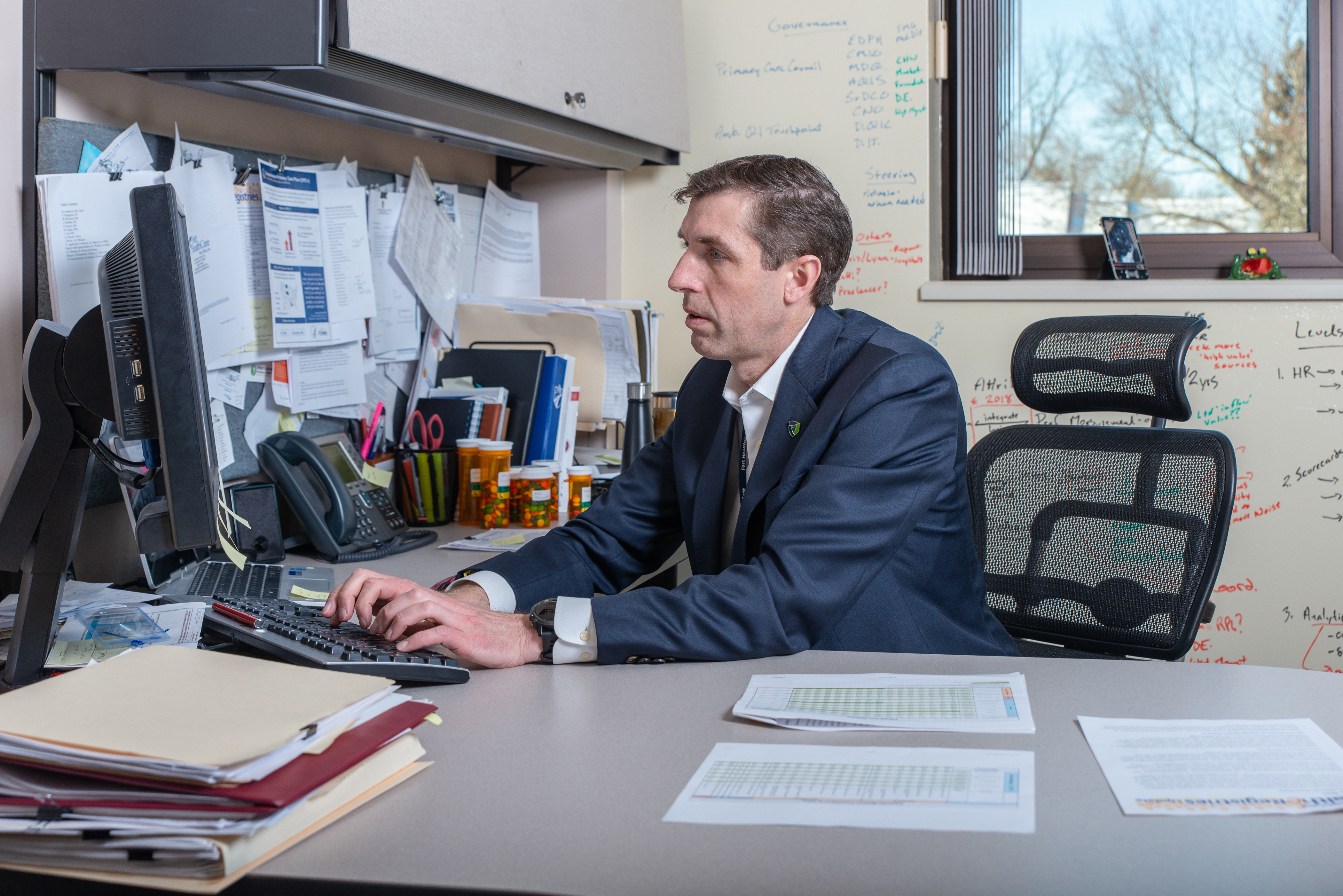
“In real time, I can go in and see that we have 16,000 patients in a certain population, 4,000 go to a certain clinic, 1,000 see a certain doctor, 100 have diabetes, and of those, 20 have uncontrolled A1C and aren’t on the right intensity statin,” says Barron. “I can do that as fast as I can say it for 223 measures of performance.”
They can then use that information to connect with physicians to learn why patients might not be on the proper intensity statin or why they aren’t meeting their health goals, even touching on social determinants of health, such as lack of access to transportation or being un- or under-insured.
“The data starts leading you there,” says Barron. “Once you pick all of the low-hanging fruit, you keep working your way up the tree to other patients that might have other health or social determinant needs for us to solve.”
Barron also uses analytics to detect potential medication administration weaknesses in the clinics, and then correct them before they become a problem, such as with storage and vaccine ordering. “With the advent of electronic health records, we have volumes of data that has untapped potential to provide insights that can be used to improve care.”
Leading rural health care
Barron — who also oversees Fort Healthcare’s lab, radiology, pharmacy, and telemedicine services — is currently pursuing an MBA to formalize and round out what he’s learned about management, business, and leadership through the course of his career. He sees a need for more pharmacists and pharmacy students to prepare themselves for upcoming leadership positions as older generations retire, especially in rural environments.

Barron, Moore, Larson, and Beirl have each returned to the UW–Madison School of Pharmacy to speak with students in the PharmD program’s Rural Health course about their innovative service developments and encourage them to pursue the unique opportunities of practicing in underserved rural environments.
“You are an absolute pillar in your community, and that’s true of any health care profession in a rural area,” Beirl says. “When you’re providing high-quality care, you’re looked upon as not only a health care resource but a leader.”
“If you want to shape health care,” Barron says, “the rural setting is the place to do it.”
Read more about alumnus Luke Beirl (PharmD ’11) and his career as a rural health care leader.
See how the School of Pharmacy is preparing pharmacy students for rural practice with a rural-focused Advanced Pharmacy Practice Experience.